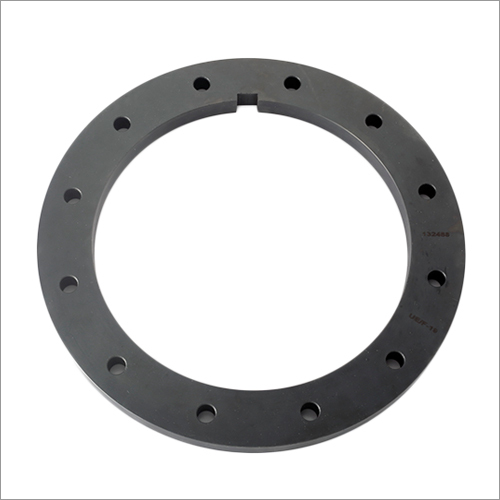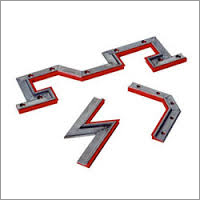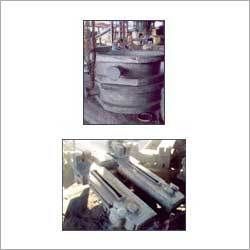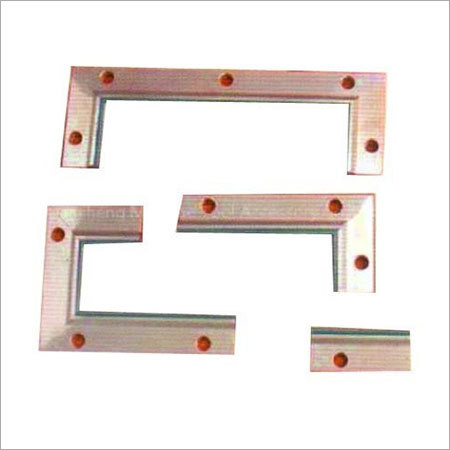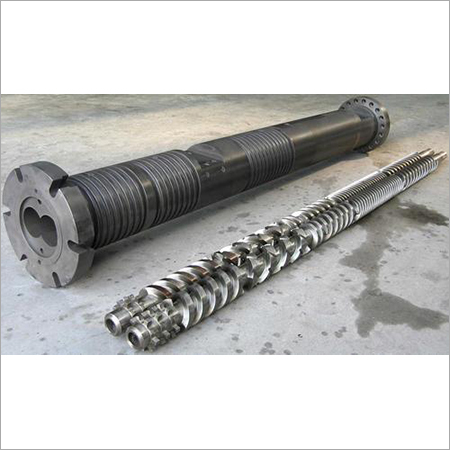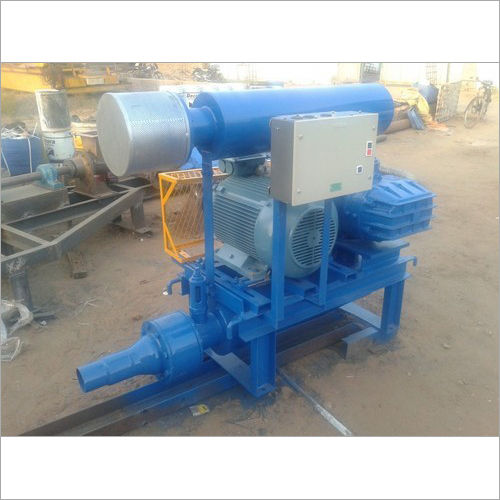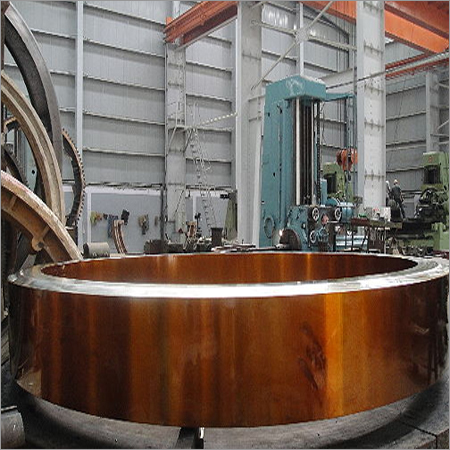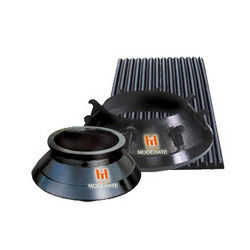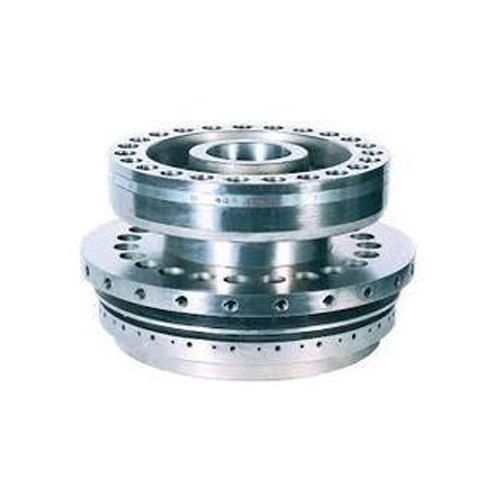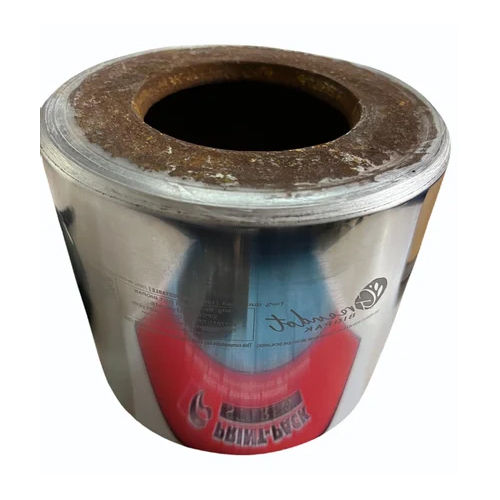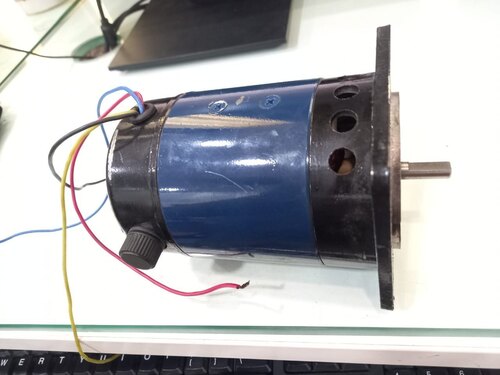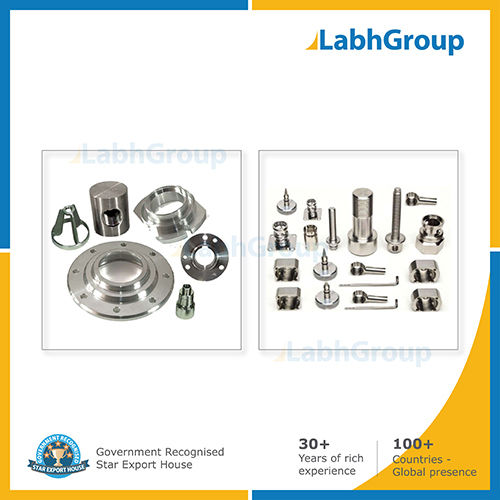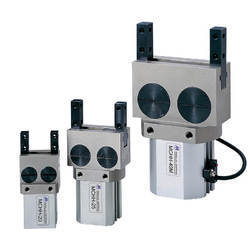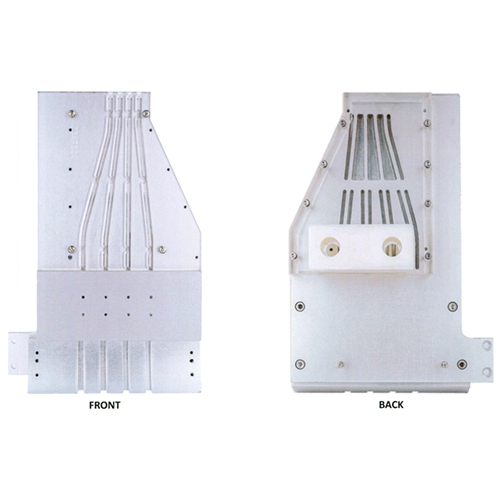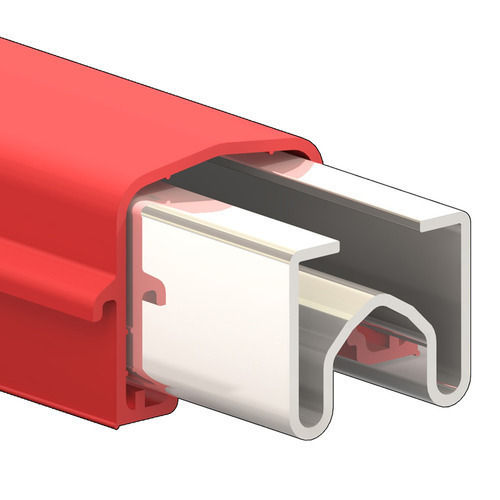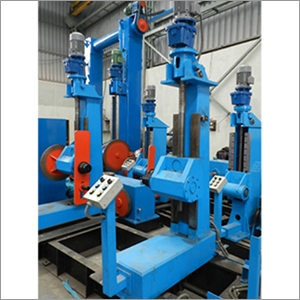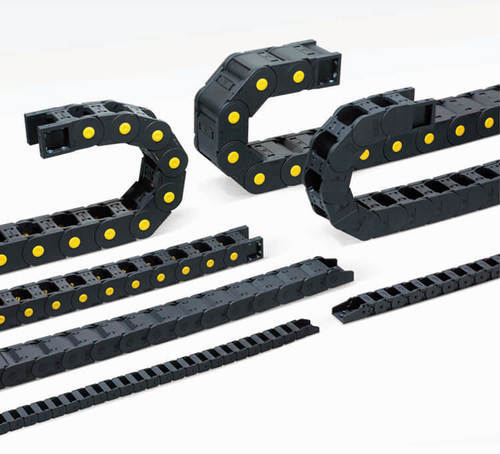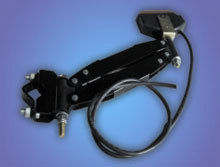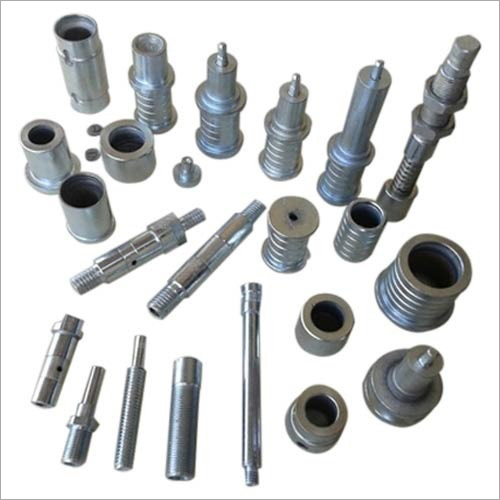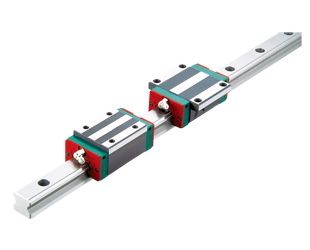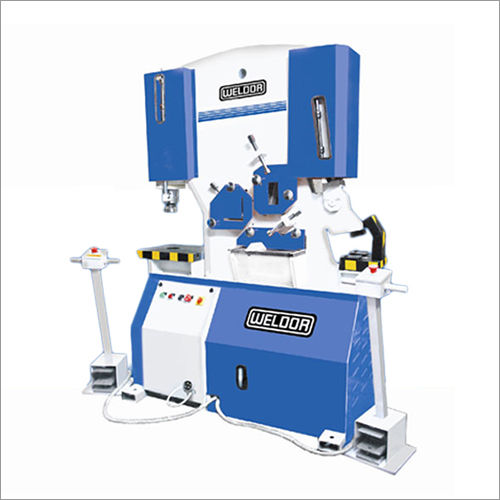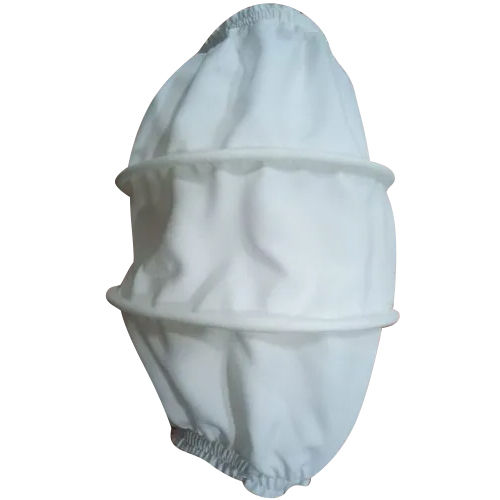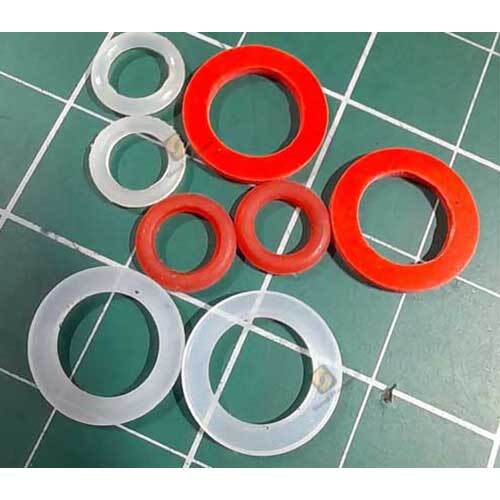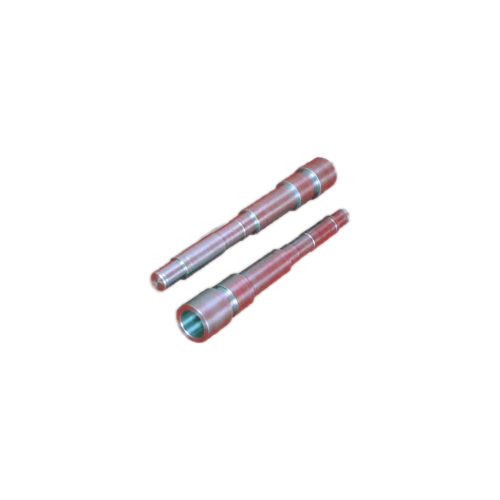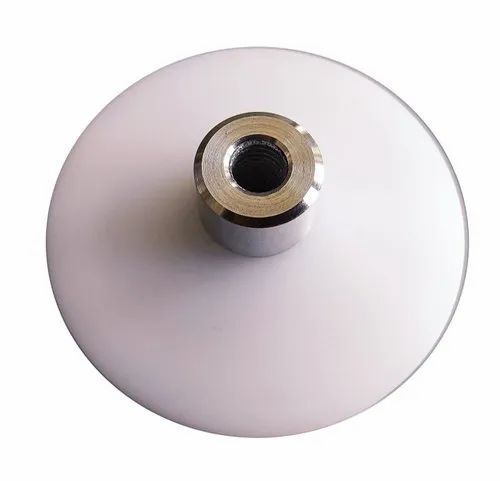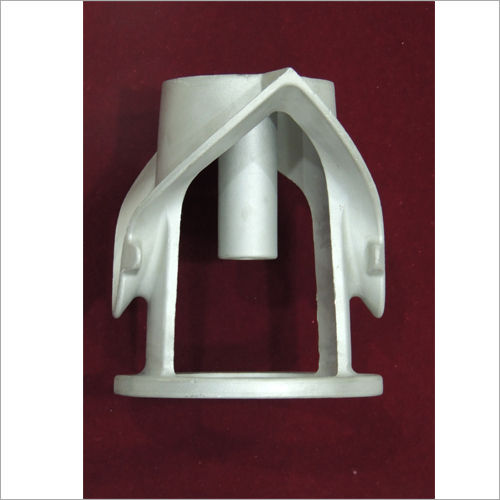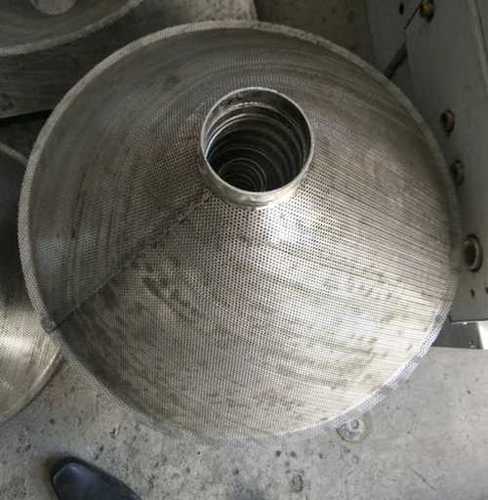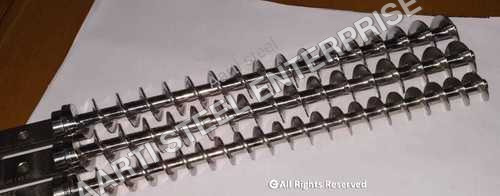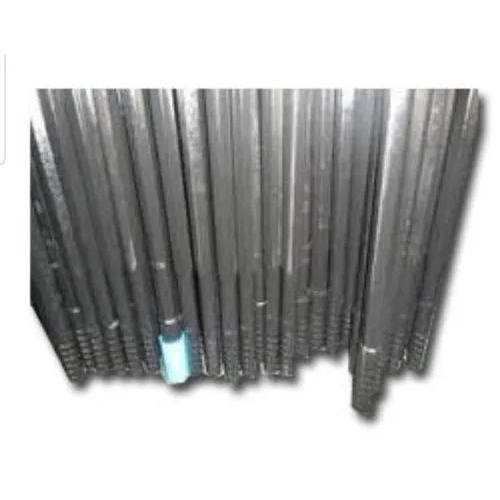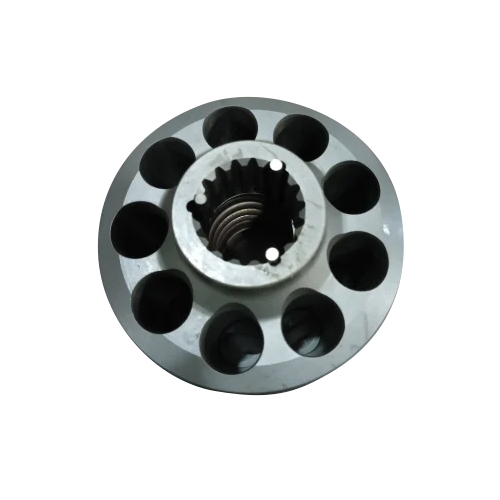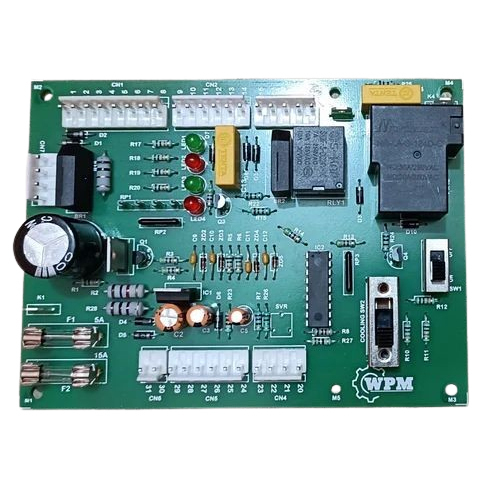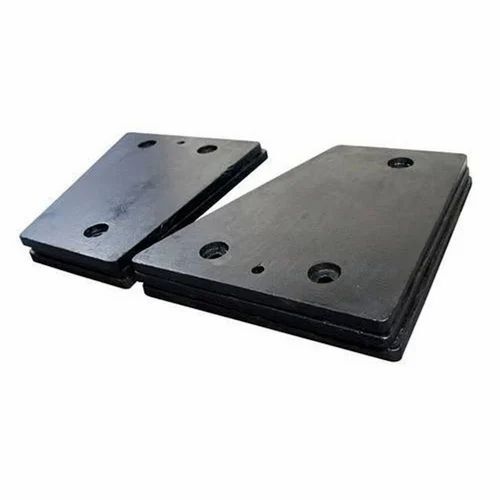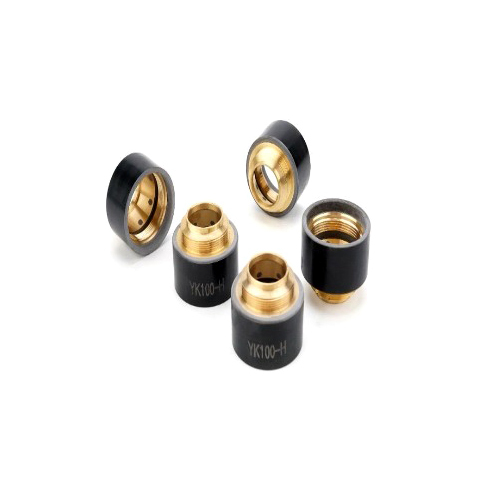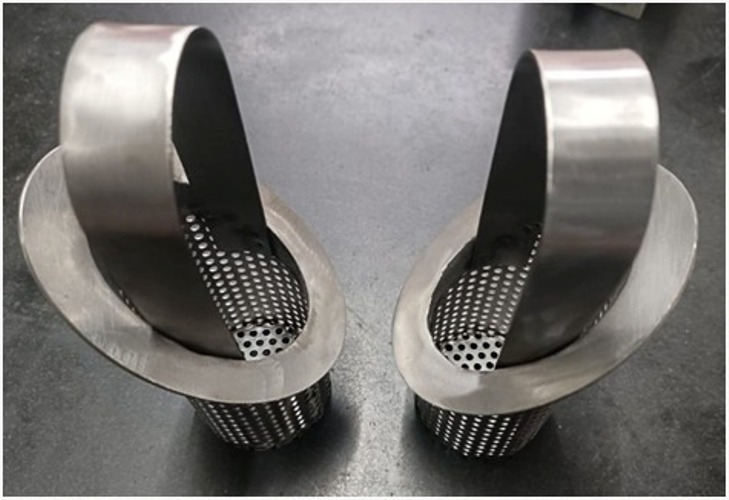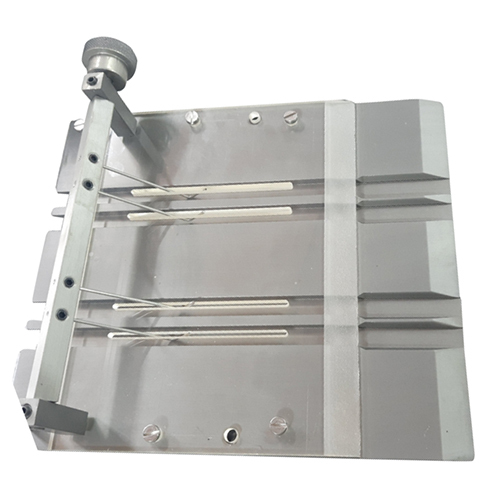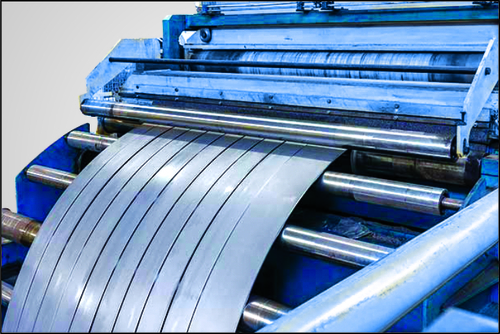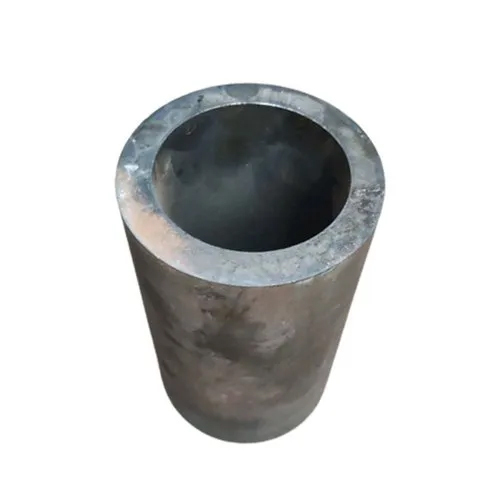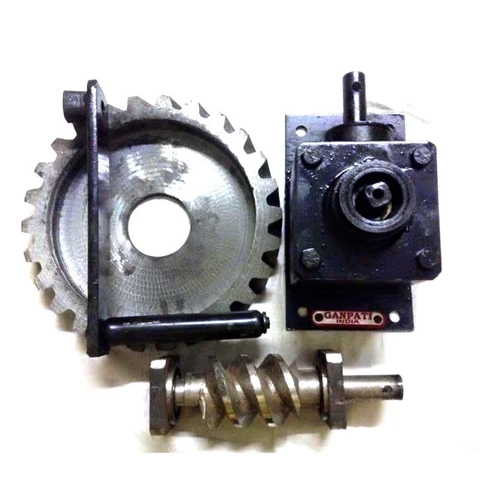Machinery & Parts
(12768 products)Way Wiper - Color: Sliver
Price: 500 INR/Piece
MOQ1 Piece/Pieces
Surface FinishPolished
Usage & ApplicationsIndustrial
Product TypeMachine Accessories
MaterialStainless Steel
Surface TreatmentCoated
ColorSliver
Scutes India Pvt. Ltd.
Pune
 Trusted Seller
Trusted Seller8 Years
 Super Seller
Super SellerSteel Rolling Mill Parts - Color: Silver
MOQ2 Ton/Tons
Product TypeMachine Spare Part
MaterialSteel
Surface TreatmentCoated
ColorSilver
Sanjay Casting & Engineering Company
Howrah
 Super Bonanza
Super Bonanza Trusted Seller
Trusted Seller16 Years
Vibratory Bowl Feeder - High Quality Raw Material | Global Quality Standards Compliance, Durable Design, Precision Orientation
Product DescriptionWe are instrumental in providing excellent quality Vibratory Bowl Feeders which are highly appreciated by our clients, who are based all across the globe. While manufacturing these Vibratory Bowl Feeders we ensure to use high quality raw material, so the the feeders we deliver are in compliance with
Magna Tronix
Chennai
 Trusted Seller
Trusted Seller4 Years
 Super Seller
Super SellerBlack And Red Machine Way Wipers
Price Trend: 1000.00 - 10000.00 INR/Piece
MOQ1 Piece/Pieces
ColorBlack and Red
Product TypeMachine Way Wipers
UsageIndustrial
TypeMachine Way Wipers
MaterialSS, Rubber
Twin Screw Barrel - Color: Grey
MOQ1 Unit/Units
Surface FinishPolished
Usage & ApplicationsIndustrial
MaterialMetal
Power SourceElectricity
Surface TreatmentCoated
ColorGrey
Precihole Machine Tools Pvt. Ltd.
Bhiwandi
Bulker Unloading System Blower - Color: Blue
Price: 200000 INR/Unit
MOQ1 Unit/Units
Usage & ApplicationsIndustrial
ColorBlue
Surface FinishPolished
MaterialSS
Surface TreatmentCoated
Warranty2 Year
Air Vac Equipment
Ahmedabad
 Trusted Seller
Trusted Seller18 Years
 Super Seller
Super SellerCopper Kiln Tyre
MOQ1 Plant/Plants
Product TypeMachine Accessories
MaterialSteel
ColorCopper
Ashoka Machine Tools Corporation
Greater Noida
 Trusted Seller
Trusted Seller21 Years
 Super Seller
Super SellerSpares And Manganese Casting
Product DescriptionWe are a well known name in the offering field of Spares And Manganese Casting. Our expertise lies in providing quality spares for construction equipment like Jaw Crusher Plates, Bowl, Concave, Side Plates, Toggle Plates, Toggle Bearings and Liners etc. Further, we can also offer Cast Iron Castings
Mechanical Impellers - Precision Machined for Superior Dimensional Accuracy, Enhanced Efficiency & Lightweight Design
Product DescriptionWe provide technically accurate array of mechanical impellers that are known for their dimensional accuracy and efficient performance. The impellers are precision machined and they have improved accuracy and efficiency. The impeller vane shapes are contoured for maximum performance and the exception
Esspee Engineers
Kolkata
 Trusted Seller
Trusted Seller11 Years
 Super Seller
Super SellerMetallic Grey Innovative Tablet Press Turret With Elp For Corrosive Resistance
Price: 95000 INR/Unit
ColorMetallic grey
Product TypeMachine Spare Part
MaterialSteel
Surface TreatmentCoated
Weight150-200 Kilograms (kg)
Mini Online Rotogravure Printing Cylinder - Color: Silver
Price: 4000 INR/Piece
MOQ100 Piece/Pieces
Surface FinishSmooth
Usage & ApplicationsRotogravure Printing Machine
Product TypeMachine Accessories
MaterialMild Steel
Surface TreatmentGalvanized
ColorSilver
Print Pack Stereo
Vadodara
 Trusted Seller
Trusted Seller7 Years
 Premium Seller
Premium SellerMotor For Band Sealer Machine - Power: 240 Volt (V)
Price: 4500.00 INR/Piece
MOQ1 Piece/Pieces
Product TypeMachine Parts
MaterialMotor For band sealer machine
TechnologyOther
Power240 Volt (v)
Warranty1
Cnc Precision Parts
Price: 1000 INR/Piece
MOQ10000 Piece/Pieces
Product DescriptionCnc Precision Parts
Labh Projects Pvt. Ltd.
Ahmedabad
 Trusted Seller
Trusted Seller4 Years
 Super Seller
Super SellerRoller Table - Heavy Structural Steel Frame with Guards & Stiffeners | Robust Design with Machined Pads & Heavy Duty Pipe Rolls
Product DescriptionOur organization hold expertise in providing excellent quality Roller Table to our valuable clients. Roller Table will be complete with guards, aprons and base frame of heavy structural steel fabricated with stiffeners and cross beams as ties. Robust and rigid construction base frame with machined
Mindman Parallel Gripper (MCHH)
MOQ40 Piece/Pieces
Payment TermsCash on Delivery (COD), Cash Against Delivery (CAD), Delivery Point (DP), Cash in Advance (CID), Cheque, Cash Advance (CA)
Sample AvailableYes
Sample PolicyContact us for information regarding our sample policy
Nano Technologies
Chennai
 Trusted Seller
Trusted Seller6 Years
 Super Seller
Super SellerLift Main Sheave
Product DescriptionWe are counted among the trustworthy and leading manufacturer and suppliers of an exclusive array of quality assured Lift Main Sheave in Ahmedabad, Gujarat, India to the customers. Made from the best quality basic material, offered products are available with us in different sizes. Moreover, these
Romaco Machine Feeding Channel - Color: Silver
Price: 475000 INR/Unit
MOQ1 Unit/Units
SizeStandard
Usage & ApplicationsIndustrial
MaterialMild Steel
Voltage220 Volt (v)
Surface TreatmentCoated
ColorSilver
Nikhil Pharma Packages Co.
Mumbai
 Trusted Seller
Trusted Seller2 Years
 Super Seller
Super SellerPin Joint Bus Bar
Price: 400 INR
Payment TermsCheque, Cash Advance (CA)
Supply AbilityAs per customer requirement Per Week
Delivery Timeone Week
Industrial Rewinding Line
MOQ1 , Unit/Units
Supply Ability1 Per Week
Delivery Time1 Days
Victory Plant And Machinery Private Limited
Thane
 Trusted Seller
Trusted Seller5 Years
 Super Seller
Super SellerDrag Chain - Plastic Material, CNC Machined, Black Color | Durable Round Design for Optimal Cable Protection
Price Trend: 900-25000 INR/Meter
MOQ1 Milliliter/Milliliters
Product TypeMachine Parts
Materialplastics drag chian
TechnologyCNC
ColorBlack
Backler India Private Limited
Bhosari
 Trusted Seller
Trusted Seller6 Years
 Super Seller
Super SellerCurrent Collectors - High Quality Raw Material | Hassle Free Performance in Material Handling Industries
Product DescriptionThese Current Collectors are made from very high quality raw material which ensures hassle free work performance at its user end. These Current Collectors are widely finds its applications in various material handling industries
Silverline Metal Engineering Pvt. Ltd.
Mumbai
 Trusted Seller
Trusted Seller18 Years
 Super Seller
Super SellerSilver Industrial Pharmaceutical Machine Parts
Price: 30000 INR/Set
MOQ1 Set/Sets
ColorSilver
Product TypeMachine Spare Part
MaterialSS
Surface TreatmentPolished, Other
Twin Sreew Barrel
Price: 150000 INR/Set
MOQ1 Set/Sets
Surface FinishPolished
Usage & ApplicationsIndustrial
Product TypeOther, Twin Sreew Barrel
MaterialMild Steel
Jimkhaas Extrusions
Ahmedabad
 Trusted Seller
Trusted Seller2 Years
 Premium Seller
Premium SellerIndustrial Hiwin Qe Series Quiet Linear Guideway
Delivery Time1 Week
Sample PolicyContact us for information regarding our sample policy
Main Export Market(s)Middle East, Asia
Victor Enterprise
Mumbai
 Trusted Seller
Trusted Seller13 Years
 Super Premium
Super PremiumBlue Hydraulic Iron Worker Machine
Product TypeMachine Parts
MaterialStainbless Steel
ColorBlue
Weldor Engineering Pvt. Ltd.
Rajkot
 Trusted Seller
Trusted Seller4 Years
 Super Seller
Super SellerWhite 240 V Plan Sifter Bag
Price: 102 INR/Piece
MOQ50 Piece/Pieces
Product TypeMachine Parts
MaterialRubber
Voltage240 Volt (v)
Surface TreatmentCoated
ColorWhite
Partik Trading Company
Howrah
 Premium Seller
Premium SellerO Ring Washer - Color: Multicolor
Usage & ApplicationsIndustriual
Product TypeMachine Parts
MaterialPlastic
Surface TreatmentPainted
ColorMulticolor
Shreeji Pharmatech
Ahmedabad
 Trusted Seller
Trusted Seller7 Years
 Super Seller
Super SellerLatest From Machinery & Parts
MS Machinery Parts
By:
Bajarang Fabricators
Rolling Mill Machinery Parts
By:
Alseena Group Industries
MACHINERY PARTS
By:
Infratech Spares
Investment Casting of Machinery Parts
By:
Prozen Technocast
Plastic Machinery Parts Heater For Mold Temperature Controller
By:
Guangdong Soxi Intelligent Equipment Co., Ltd.
Durable Plastic Machinery Parts
By:
Quality Steel Works
Explore More Cities
Ready To Ship Machinery & Parts
Machinery & Parts: Types And Applications
Introduction to Machinery & Parts
To apply forces and regulate motion, a machine requires a power source. Machines can refer to either man-made devices like those powered by engines or motors, or natural biological macromolecules like molecular machines.
A machine part is the smallest individual mechanical part or assembly of a machine in mechanical engineering. They serve a specific purpose and can't be substituted for anything else. Although a bearing can be disassembled into its component mechanical parts—balls, rings, and seals—these elements cannot carry out the bearing's job.
Many different kinds of machines rely on these components. Fasteners (screws, nuts, rivets, etc.), chains, shafts, keys, bearings, and belts are all instances of multipurpose machine elements. In most of these devices, they serve the same purpose.
What are the Various Parts of a Machine
1. Bearings
Bearings are a ubiquitous component of mechanical systems. Their duty is to reduce or eliminate sticking or rubbing between moving components. Without it, the mechanical design of rotating machines would be without a crucial component.
You can find them in a wide range of sizes and forms. The wide variety of bearing types on the market allows engineers to find the best one for each application, maximizing reliability, efficiency, performance, and durability.
Depending on the kind of bearing, they can transfer radial loads from the spinning part to the bearing housing or axial loads (thrust bearings).
2. Motor
It's the thing that does the work by changing the shape of the energy that powers it or burns it. The motors themselves are energy converters, converting kinetic, chemical, or electrical energy into mechanical power. This is doable with a rotating axis or a piston that moves in and out of the same hole at different speeds. Transformers are motors that can change mechanical energy into motion. This class also contains compressors and pumps.
3. Shafts
Typically, shafts are CNC machined after being developed for a specific purpose. Shafts are long, cylinder-shaped parts that are used to transmit mechanical power and torque between two other parts.
Engineers utilize them when a direct connection would be impractical due to physical separation or when two or more parts of the drive train must function in different conditions.
From the engine room to the pump room, the bulkhead is only penetrated by the shaft. When in use, the steam turbines in the engine room generate a great deal of heat.
4. Keys
Keys are tiny mechanical pieces used in machine design to couple shafts to other moving parts. Torque between the two parts may be transferred only via them in some instances. The keyway is the term for the slotted opening in the hub. When the key is inserted into the shaft, it rests on the keyseat at the bottom of the keyway.
A keyed joint is the entire assembled unit. When keys are put in the axial direction, a keyed joint prevents any relative rotational motion but may permit some axial motion.
5. Frame
The engine and the system are held in place by a sturdy frame. To ensure the connection or coupling of all machine parts is its job. The safety of the product depends on numerous factors that must be considered during the frame's design phase. The best possible structure can then be designed based on the analysis of effort and deformation performed on each machine part.
6. Couplings
Couplings, in the context of mechanical design, are components that join two rotating in-line shafts for the purpose of transmitting power. Each component in the assembly spins at the same rate. Depending on the situation, a connection might be either rigid or flexible.
Flexible coupling can compensate for little misalignments in the shafts that may occur during installation or over time. In addition to protecting machinery from damage, they extend its useful life by dampening vibration and shock.
7. Regulation and Control System
These are the parts of the machine that allow the operator to adjust the power output in order to match the workload. Indicators, buttons, switches, actuators, and controls all fall under this category.
8. Fasteners
When designing machines, it's crucial to have as much detail as possible when it comes to the design or selection of fasteners. This is done to guarantee that the machine parts in question are up to the task of withstanding the loads imposed by the product while in use. Standard fastener materials include carbon steel, stainless steel, and alloy steel.
9. Gears
Wheels with teeth are used in gears, which are one of the simplest types of machine parts. Gears transmit rotational energy from one shaft to another. In accordance with the principles of energy conservation, they are able to either raise or reduce angular velocity while doing the opposite to the torque. These components serve essentially as levers in a mechanical system that facilitates translation.
Different Types of Machinery & Parts and Their Applications
1. Drill Press
A drill press is a type of machine tool typically employed in the metalworking industry for the purpose of drilling. A work surface, known as the bed, is typically included to enable the component being drilled to be held in a vertical position, and it can be operated manually or electrically.
They are more stable than traditional hand drills and may be used with confidence. Making drills at the workbench is a continuous process that guarantees pinpoint accuracy. Drill presses have been used in the metalworking industry for hundreds of years.
2. Hobbing Machines
When it comes to the metalworking industry, hobbing machines have been instrumental in boosting both quality and productivity. They are a sort of milling machine that uses a unique cutting tool to manufacture precise cylindrical components such as shafts, gears, splines, and many more. At the very least, any metal factory worth its salt will have a couple of hobber machines. They can produce vast volumes of parts per day for a low cost and with a small staff.
3. Shearing Machine
Shearing machines are used to cut sheet metal to certain dimensions. The lack of chips and other residue from the shearing process makes this metalworking equipment particularly well-suited to use in factories, where such waste would otherwise litter the workplace. Shearing machines, like the other tools on this list, are indispensable in the majority of metal fabrication factories. Shearing is related to blanking and piercing, two additional major metal-cutting procedures.
4. Planer Machine
Parallels can be drawn between shaper machines and planar machines. In truth, this device is identical to others like it, with the exception that the cutting tool remains in one place while the workpiece is moved in a straight path. Additionally, these tools are often bigger than shaper machines. Metals like steel can have their thickness and dimensions modified by using these tools during the machining process. In addition, it can be used to smooth out uneven surfaces.
5. Broaching Machines
Materials of all kinds can be cut, shaped, and formed by a broaching machine. A broach or toothed tool is used to cut away excess material. Broaching can be done either in a linear or circular fashion. Linear broaching, in which the machine is parallel to the workpiece, is the more prevalent method. But in rotary broaching, the broach is spun while being used on the workpiece. Broaches are multipurpose instruments that can be put to work in a wide range of settings. They make a wide variety of items for use in metalworking, which are sold to professionals in the field.
6. Shaper Machine
In order to shape a workpiece, a shaper machine employs a single-point cutting tool that travels in a linear motion. The operation is straightforward and the device is intuitive to use. Metal can be cut, shaped, or formed with these mills. Because of the way they are usually set up, they may easily reach the material from any angle.
7. Drilling Machine
One of the most ubiquitous machine types in a metalworking workplace is the drilling machine. They are also handy for a wide range of home maintenance tasks. Drilling machines are user-friendly because their tools are simple to install and swap out.
8. Grinding Machine
A grinding machine utilizes the rotation of an abrasive wheel to achieve the desired finish. The workpiece is finished by the rotating wheel, which removes a very fine layer of material along the surface, leaving it feeling smooth to the touch. After other instruments like saws or lathes have been used, a grinder can be used to refine the shape, flatten, and smooth the surface of the cut parts. In order to refinish or refurbish an item, abrasive materials can be used to get rid of any rust or old paint.
9. Milling Machine
Using rotary cutters, the milling machine is a metalworking tool. A vertically moveable work table secures the workpiece while a rotating tool can be moved around it. In general, a milling machine can conduct two distinct types of milling: face milling and peripheral milling. Unlike peripheral milling, in which the cutter is set perpendicular to the workpiece, face milling involves cutting a flat surface at right angles to the rotation of the cutter.
Conclusion
Although each part of the machine functions autonomously, they all contribute to the machine's overall ability to affect motion. This summary of machine automation parts is meant to be informative and comprehensive. Experts can answer any queries you may have about machine parts and automation design, as they are a leading industrial parts supplier and bespoke automation specialist.
FAQs: Machinery & Parts
Q.How do you identify machine parts?
Ans. To check the quality of machine parts, don’t forget to check the warranty. Meet manufacturers and collect the ideal detail about the machine you’re purchasing for the specific task.
Q.What materials are used to manufacture machinery & parts?
Ans. The material includes Aluminium, Zinc, Stainless Steel, Copper, Magnesium, Titanium, Bronze, Brass, and Iron.
Q. What are some examples of general and special-purpose machinery & parts?
Ans. Developed to meet the specific needs of a given industry, Special Purpose Machines are highly sophisticated pieces of machinery that are fully automated and programmed. These mechanical components have a designated place in the creation of machines.
Q.How much does it cost to replace machinery & parts?
Ans. Producing machinery rarely fetches what it would cost to replace it at the market value of 500–10,000 INR.
Manufacturers & Suppliers of Machinery & Parts
Company Name | Member Since |
|---|---|
Ugi Engineering Works Pvt. Limited Kolkata, India | 23 Years |
Ashoka Machine Tools Corporation Greater Noida, India | 21 Years |
Air Vac Equipment Ahmedabad, India | 18 Years |
Silverline Metal Engineering Pvt. Ltd. Mumbai, India | 18 Years |
Sanjay Casting & Engineering Company Howrah, India | 16 Years |
Moderate Machines (Pvt.) Ltd. Jaipur, India | 14 Years |
Victor Enterprise Mumbai, India | 13 Years |
Esspee Engineers Kolkata, India | 11 Years |
Shypod Engineers Ahmedabad, India | 11 Years |
Gurukrupa Bellows Pvt Ltd Pune, India | 10 Years |
Popular Products
